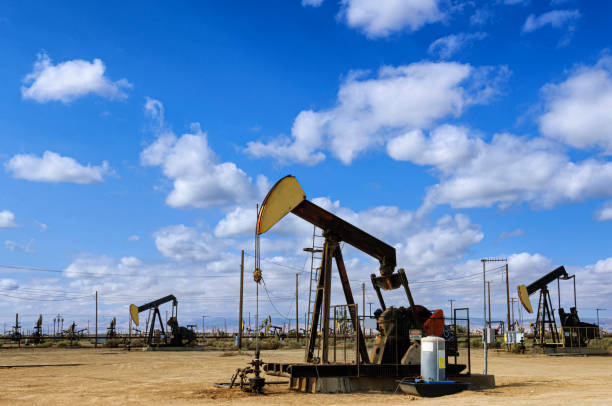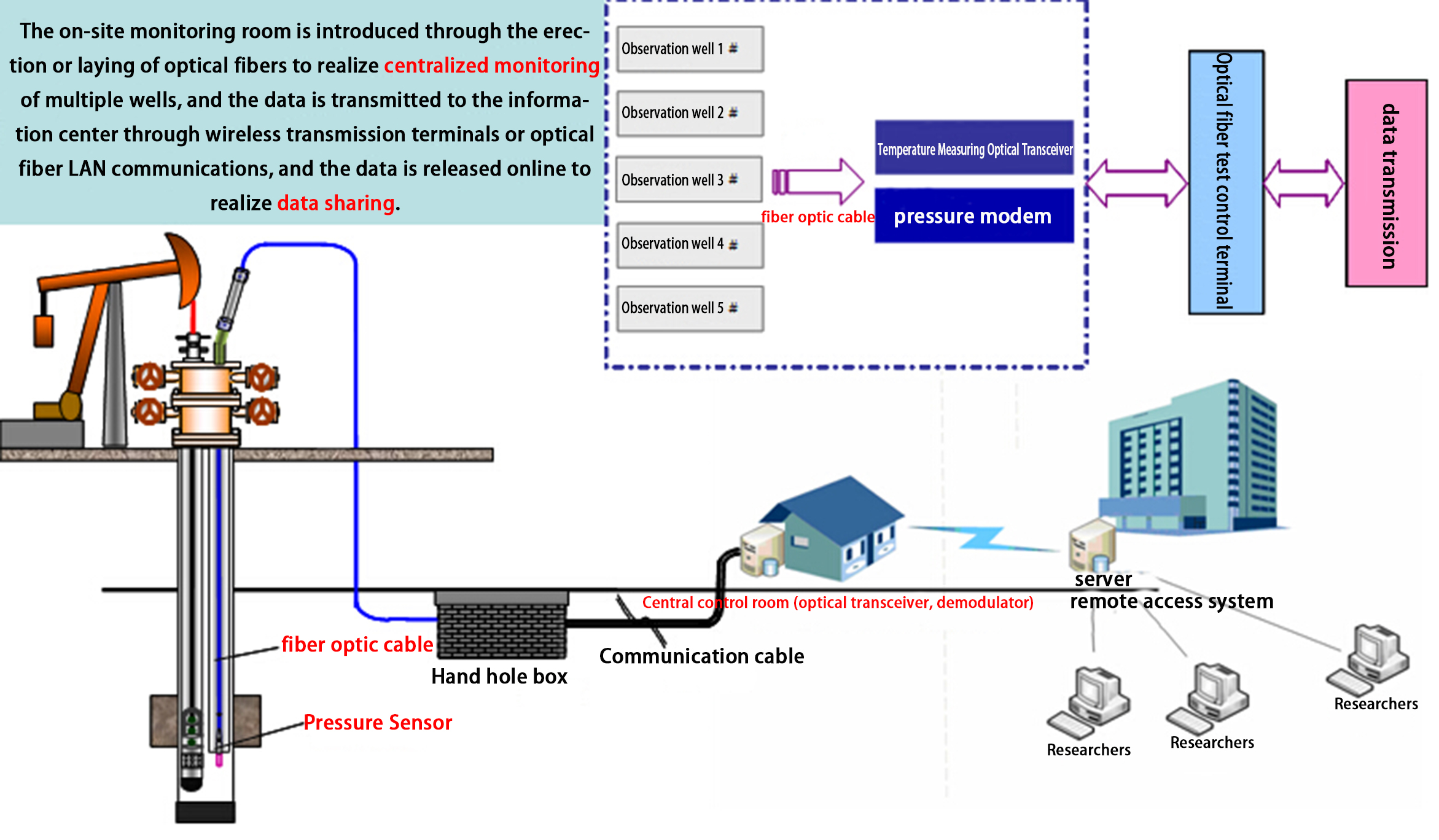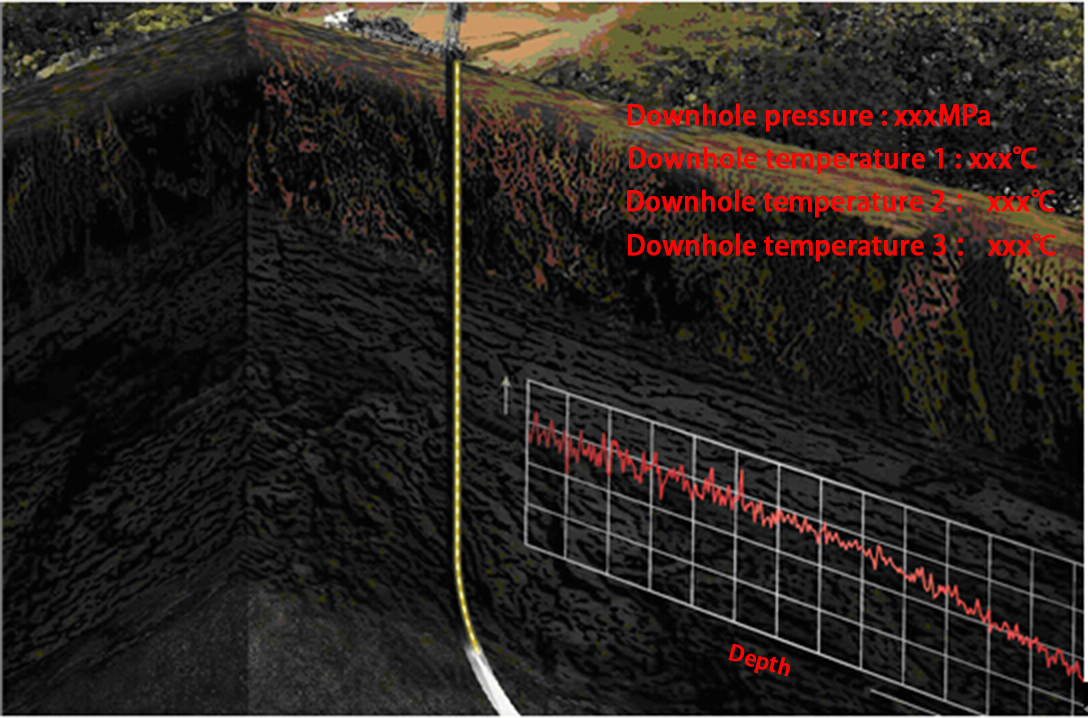Oil downhole exploration and reservoir data analysis
Simultaneous measurement of downhole temperature and pressure
Underground environments typically have extreme conditions such as high temperatures, high pressures, and toxic gases. Therefore, accurate monitoring of temperature and pressure variations is crucial for preventing accidents and ensuring the safety of personnel. Traditional monitoring methods may have limitations such as limited number of monitoring points and installation difficulties.

In underground engineering and resource extraction processes, temperature and pressure are important parameters that have a significant impact on the safety of underground equipment and personnel, as well as the stability of the work environment. Traditional temperature and pressure monitoring methods often require separate sensors for measurement, while distributed fiber optic temperature and pressure monitoring technology can provide a more comprehensive and real-time solution for simultaneous temperature and pressure measurement.
Distributed fiber optic temperature and pressure monitoring, also known as distributed temperature and pressure sensing (DTS/DPS), is a solution that utilizes distributed fiber optic sensing technology for temperature and pressure monitoring. It is widely used in underground engineering, underground mines, oil fields, and other environments. In underground engineering, monitoring temperature and pressure is crucial for ensuring the safety and reliable operation of the project.
Fiber Deployment: Install fiber optic sensors in the underground environment, using either single-core or multi-core fiber optic cables, depending on the specific requirements. The fiber can be deployed along underground pipes, equipment, or channels to cover the areas that need monitoring.
Sensor Installation: Introduce temperature and pressure-sensitive elements into the fiber optic cable, typically using techniques such as fiber optic gratings or fiber optic pressure sensors. These sensor elements cause changes in the optical signal within the fiber in response to temperature and pressure variations, enabling the monitoring of temperature and pressure.

Fiber Connection and Data Acquisition: Connect the fiber optic sensors to a data acquisition system or monitoring device to ensure real-time data collection and transmission of temperature and pressure data. The optical signals from the fiber can be digitized and processed through fiber optic equipment and interfaces to provide readable data.
Real-time Monitoring and Data Analysis: The monitoring system can continuously monitor the temperature and pressure changes in the areas connected to the fiber optic sensors. Temperature and pressure data can be analyzed, recorded, and visually displayed in real-time through the monitoring system, allowing operators to have a real-time understanding of the underground temperature and pressure status.
Temperature and Pressure Alarms: Based on safety requirements and pre-set temperature and pressure thresholds, the monitoring system can be configured with alarm functions. If the temperature or pressure exceeds or falls below the set thresholds, the system will trigger alarms and send alert messages to operators, enabling them to take prompt actions.
Remote Monitoring and Control: The distributed fiber optic temperature and pressure monitoring system can be connected to a central control room or remote management platform, enabling remote monitoring and control. Operators can access temperature and pressure data through remote terminals, monitor changes in real-time, and take appropriate actions when necessary.
Data Logging and Analysis: Temperature and pressure data can be logged and analyzed over an extended period, allowing for report generation, trend analysis, and predictions. This helps assess the changing trends in the underground environment, identify potential issues in advance, and take appropriate safety measures.
Distributed fiber optic temperature sensing technology is based on fiber optic sensors that incorporate temperature and pressure-sensitive elements. It measures the distribution of temperature and pressure by detecting changes in optical signals. This technology has the following background and advantages:
Real-time Monitoring: Distributed fiber optic temperature sensing technology enables real-time monitoring of temperature and pressure underground, providing highly accurate measurement results. By sampling along the fiber optic length, it captures continuous temperature and pressure distribution data, enabling comprehensive monitoring of the underground environment.
High Resolution: Fiber optic sensors offer high resolution, capable of capturing subtle changes in temperature and pressure. This allows distributed fiber optic temperature sensing technology to provide precise data, enabling accurate monitoring and analysis of temperature and pressure variations in underground engineering and resource extraction processes.
Long-range Monitoring: Fiber optic sensors can cover long distances ranging from hundreds of meters to tens of kilometers, making them suitable for wide-scale monitoring requirements in underground projects. This means that multiple locations underground can be monitored using a single fiber optic cable, enhancing monitoring efficiency and coverage.
Interference Resistance: Distributed fiber optic temperature sensing technology exhibits strong resistance to interference, ensuring stable operation in harsh underground environments. It can withstand vibrations, electromagnetic interference, chemical corrosion, and other external factors, guaranteeing measurement accuracy and reliability.
 By employing distributed fiber optic temperature and pressure sensing technology, real-time and comprehensive monitoring of underground temperature and pressure can be achieved. This helps in early warning of potential safety risks, enhancing safety and efficiency in underground operations, ensuring the well-being of workers, and supporting the sustainable development of underground engineering and resource extraction.
By employing distributed fiber optic temperature and pressure sensing technology, real-time and comprehensive monitoring of underground temperature and pressure can be achieved. This helps in early warning of potential safety risks, enhancing safety and efficiency in underground operations, ensuring the well-being of workers, and supporting the sustainable development of underground engineering and resource extraction.





